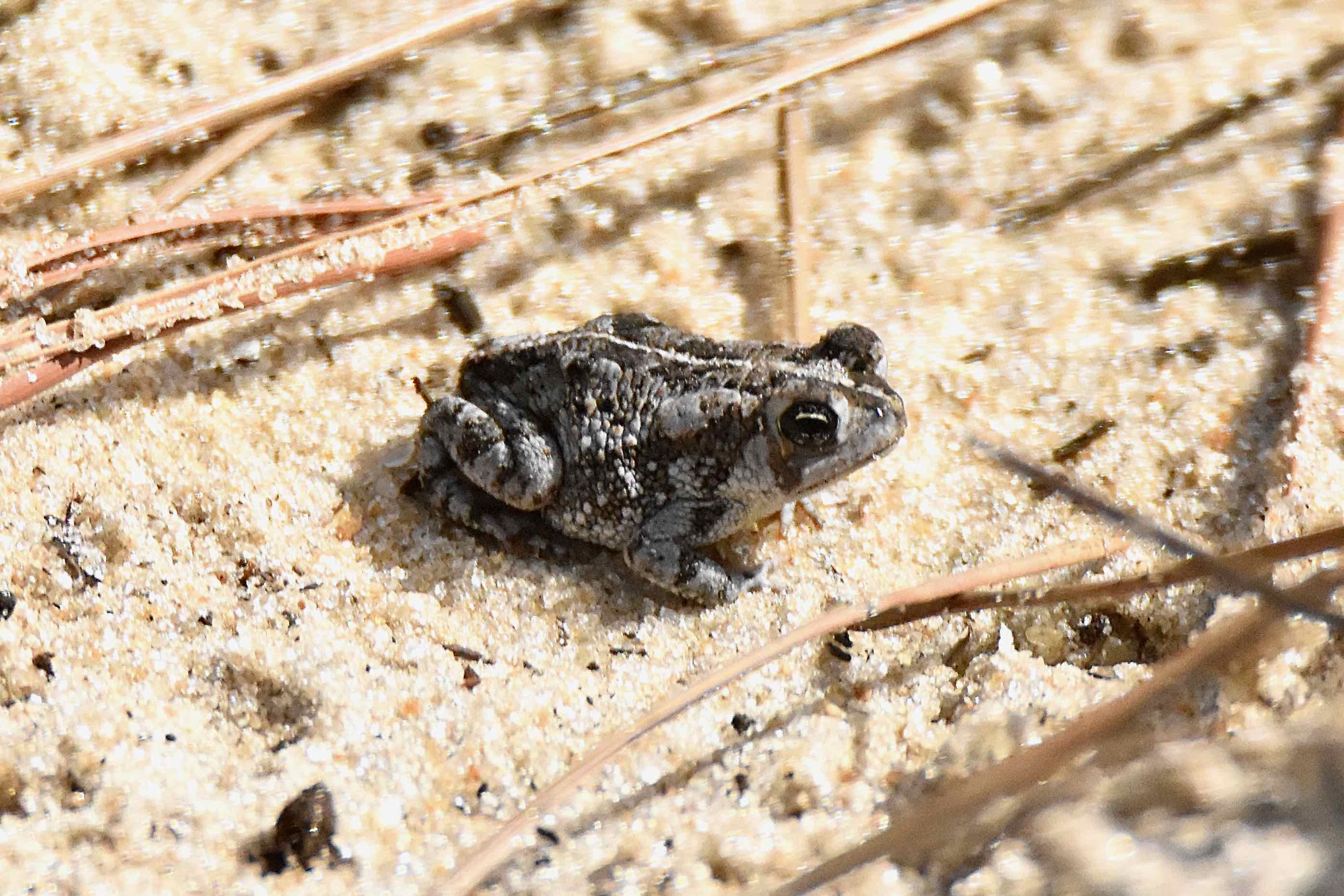
Oak toad, photographed at Royal Palm Beach Pines Natural Area, Royal Palm Beach, Palm Beach County, in April 2018.
You’re looking at the smallest true toad native to the United States. Indeed, the oak toad, Anaxyrus Quercicus, can be a mere three-quarters of an inch long, reaching a maximum of only an inch-and-a-half. Tiny indeed.
To top it off, they spend much of their time burrowed in sand or hiding under debris. Conspicuous they’re not. Which, come to think of it, is a pretty good idea for a creature that small.
Oak toads are Florida natives, found along the Gulf and Atlantic coastal plains between Louisiana and southeastern Virginia. They’re found throughout Florida except for the lower Keys.
They vary in color from reddish-brown to dark-brown to gray. They have a prominent line, white or yellowish, running down their backs and three or four pairs of black blotches along the back. Like some other toads, they have paratoid glands along either side of their heads that contain a poison used to ward off predators. Theirs tend to be inconspicuous.
They’re so small that they were once commonly believed to be juvenile southern toads, which happen to be one of the larger native toads found in Florida.
As noted above, oak toads tend to hang in places with sandy soils — pine flatwoods, pine-live oak woods and scrubs. Being amphibians, they need water to mate, usually shallow, temporary pools of water, including dome swamps, marshes and ditches.
Males head to the water first and establish territories. As females lay their eggs in long strings that wrap around vegetation or float on the water’s surface, males fertilize by releasing sperm into the water. As many as 100 to 250 eggs may be laid at a single time. During the breeding season, which runs between April and October, a female may lay as many as 700 eggs. The beginning of the season corresponds with the beginning of the rainy season, which probably means late May or June in South Florida.
The eggs hatch in a matter of days into tadpoles that will emerge as fully mature adults with two months. They’ll hang around the pool where they were born for a few days, then head inland.
One odd reproductive feature that provide males with an unusual backup plan. They are born with an ovary. If a guy oak toad runs into “testicular failure,” meaning his male parts don’t work, he can still reproduce — as a female.
Courting males, by the way make a chirping sound that resemble birds. Click here for a short sample courtesy of the Univerity of Florida.
The lifespan of an oak toad in the wild isn’t known.
What makes a good meal for an oak toad? Pretty much anything on six or more legs — ants, beetles, centipedes, spiders and other invertebrates.
Oak toads can be rare in parts of their range. Virginia list the little guys as “of special concern.” The Internation Union for Conservation of Nature rates the species “least concern,” meaning no iminent threat of extinction.
Oak toads are members of Bufonidae, the family of true toads.



